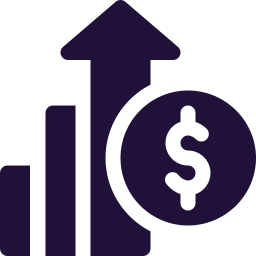Whole life insurance was created to provide guaranteed coverage and cash value growth for the insured’s life, with fixed, guaranteed premium payments.
Before you purchase a whole life insurance policy, there are some words and phrases that you should be familiar with to help you understand the policy's inner workings.
Here are six terms to know before purchasing a whole life policy:
This article is written as general education, and should not be considered as personal financial advice. If you would like personal guidance with life insurance, you can schedule a time to talk with one of our experts.
Participating versus Non-Participating
Participating whole life insurance earns dividends and is usually issued by a mutual insurance company, which is owned by it's policyholders.
Non-participating whole life does not earn dividends and may be issued by a mutual insurance company or a publicly traded insurance company. While these policies do not earn dividends, they can generally still earn interest, which can provide a similar effect.
It is important to understand that dividends in a participating policy are not guaranteed and may change depending on the results and financial health of the issuing insurer.
Dividends are generally considered a return of premium. This means they may not be subject to ordinary federal income tax. There are however times when dividends may be taxable, so please consult your tax advisor.
Death Benefit
The death benefit is the amount paid to the policy owner's beneficiaries when the insured dies.
The death benefit is typically a lump sum payment that can be used for funeral expenses, outstanding debts, and to create a legacy.
In most cases, the death benefit will be free of ordinary federal income tax, if there is a properly structured ownership and beneficiary arrangement. Depending on your needs and unique situation, the death benefit amount is determined when the policy is purchased, and will affect the premium of the policy.
The policy death benefit may also grow. If the contract is a participating whole life it may earn dividends.
Policy owners can choose several different dividend options. Two dividend options that could increase the death benefit are to purchase additional insurance or to let the dividends continue accumulating inside the policy.
If the whole life policy is non-participating it will not earn dividends, instead it may earn interest that could also increase the death benefit.
Premium
The premium is the amount that the policy owner pays the insurance company to maintain the policy.
The premium can be paid monthly, quarterly, semi-annually, or annually. The premium amount is based on factors such as the death benefit amount and the policyholder's age, health, and lifestyle.
Most whole life insurance has a fixed, guaranteed premium that is due for the certain amount of time, the paid up period, which is set out in the policy (e.g. for 10 years, until age 65, 100, 121 etc.).
Unlike universal life insurance, whole life does not offer premium flexibility. If a policy owner is wanting help paying some or all of their premium payments due they may have the option to use dividends/interest and/or withdrawals from the cash value in the policy.
If you have a participating whole life policy you can change the dividend option to reduce the premium. Depending on the amount of the dividend declared and the premium due this option would allow some or all of the premium to be paid. Dividends are not guaranteed.
The policy owner in a participating whole life policy may also have a premium payment option for their dividend. These premium paying options would use newly declared annual dividends with saved dividends (usually accumulated or paid up additional insurance) to offset all of the premium payments. This is generally only viable in the later years of the policy, after the dividends have grown.
Participating policies may also have loans available to help pay premiums, but again this would usually only be available in the later years after the policy has grown.
If you have a non-participating whole life policy that does not earn dividends, and there is a cash value growth based on interest in your contract, you may be able to use existing cash value to offset some or all of the premium cost through a loan on the contract to pay premiums.
Keep in mind that using any funds from inside a whole life policy to help with premium payments will affect the growth that you were earning on those funds as well as the death benefit. The money that you use to pay premiums will generally no longer be working for you inside the policy after they are used to pay premium payments.
Cash Surrender Value
Cash surrender value is the amount of money a policy owner would receive if they surrendered (canceled) their whole life policy.
The cash surrender surrender value typically grows tax-deferred but may have tax consequences if the policy is canceled.
If you have a participating whole life policy, the cash surrender value is determined by adding cash value plus dividend value, minus any outstanding loans and interest.
If you have a non-participating whole life policy the cash surrender value is determined by using the cash value minus any outstanding loans and interest.
Cash Value
The cash value is the total money accumulated in the policy's cash value account.
The cash value may have a guaranteed annual return, which would be outlined in the policy. This is the minimum annual rate of return that the policyholder can expect to earn on the whole life insurance policy's cash value.
The guaranteed return on investment is typically lower than the policy's total potential return on investment, but it offers a guaranteed floor for your rate of return.
If you have a participating whole life policy, the cash value accumulation is usually a separate bucket of money from any dividends you may be re-investing in the policy or receiving. The dividend growth is not included in this guaranteed return as dividends are considered a return of premium and are not guaranteed.
Riders
Riders are additional options that may be added to a contract. Some riders may be automatically added to your policy.
An example of an automatic rider would be an Accelerated Death Benefit/ living benefit rider. These types of riders would pay out most of the death benefit while the insured is still alive if the insured has a terminal illness or in some cases permanently confined to a nursing home.
Other riders that could be added to a whole life policy include:
• Accidental death benefit rider, which would increase the death benefit if insured dies in an accident.
• Spousal rider, which is usually a term life insurance rider covering the life of the spouse of the insured for a specific period of time.
• Child rider, which is usually a term life insurance rider covering the life of any children that are legally related to the insured. The rider typically ceases to provide coverage when a child reaches a certain age, usually age 18 or 21.
• Waiver of premium rider, which covers the premium of the policy if the insured becomes disabled, but usually for a specific period of time or until recovery. This rider usually ends around age 65 in most contracts.
• Term insurance rider, this would increase the death benefit for a limited amount of time, usually at a lower cost than if the death benefit wasn't included in a rider, since the term would expire at some point. Note many term riders are annually renewable meaning the cost of the rider may increase annually.
Additional riders generally add additional costs to the premium but enhance the contract in some way.
To learn more about riders, you can read our article Everything You Need to Know About Life Insurance Riders.
In Closing
Before buying any life insurance policy, it is essential to understand its terms and conditions to make an informed decision.
Knowing the six life insurance terms mentioned above will help you understand how whole life insurance works, what you can expect to pay, and how the policy's cash value and death benefits work.
Take the time to research different policies and their terms to find the best policy that suits your needs and budget.
Get the Right Policy with White Swan
Our broker platform offers a seamless digital experience for purchasing and managing life insurance policies unparalleled in transparency, flexibility, and simplicity.
Getting started with a personal plan is easy - visit our platform today to get a personal plan.
If you prefer to get talk with one of our industry experts rather than requesting a personal plan online, you can do so through this link.
White Swan for Partners is also available to financial advisors, fintech companies, and insurance producers, allowing them to provide their clients with a modern, streamlined process.
.png)




.png)



.png)


.png)









.png)
.png)
.png)



.png)


.png)
%20copy.png)
%202.png)
.png)



.png)
.png)
.png)